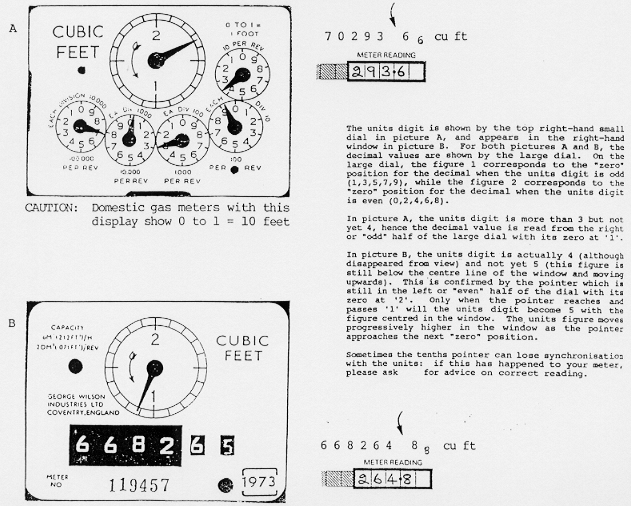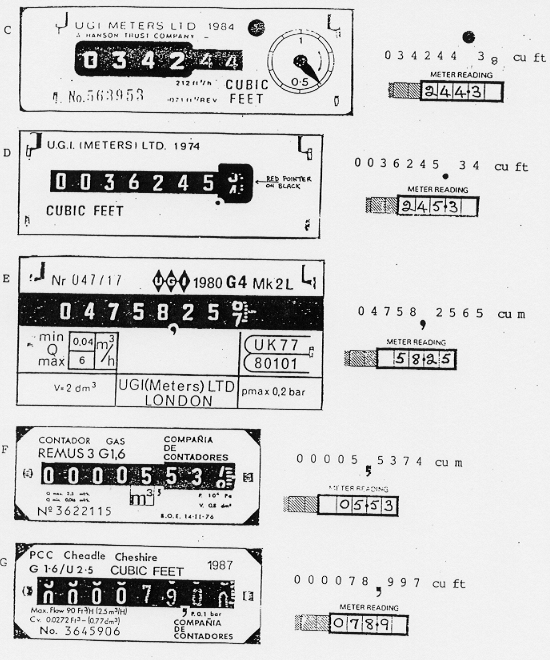Mis-reading the gas meter, or entering the reading incorrectly on our data return form, is a common source of error. This Guidance Note has been prepared to help prevent errors of this type. Meter readings must be accurate: readers are advised to take their time and check their readings carefully.
Always note the time corresponding to the meter reading, correct to the nearest minute. This will either be in GMT or BST, according to the time of year: do not convert BST to GMT. The time should be written on our data return form in24-hour clock form, eg. 9 am as 0900, 1.30 pm as 1330, etc. Make sure that the time is entered against the correct date.
The pictures A to G below show the display seen on some of the commonly used gas meters, and have been selected to illustrate some of the common reading difficulties encountered. The reading indicated is shown next to the picture, as well as the symbol used to represent the decimal point, and how the reading should be entered on the data return form. The entry on the form must always consist of exactly 4 figures, correctly aligned around the pre-printed decimal point:
for a meter recording in units of cubic feet, the format is 123.4
for a meter recording in units of cubic metres, the format is 12.34
(see the back of data return form, para. 7.)
Cubic feet readings are entered to one place of decimals, and cubic metre readings are entered to two places of decimals: it is not necessary to round up the reading. Leading zeros must appear where appropriate, eg. 003.4, 02.34. You may find it helpful to cover part of the meter display window with masking tape, so that only the four required figure positions are visible, and mark the position of the decimal point.


The person who reads the meter should calculate the volume of air recorded since the last reading, and check that this is within the acceptable range (see the back of data return form). Any unexpected variation should be checked: this way, problems with the sampling equipment can often be dealt with before they become serious and lead to loss of data. If a power cut is suspected, please indicate this on the form: on which day and for how long?
If your meter has a display which matches none of these, please let AEA Technology know its details. There are some types of domestic gas meters which only measure to the nearest 100 cubic feet: these do not give the required precision for use in smoke and sulphur dioxide samplers, and are therefore not suitable for this application.
Please note that the accuracy of the meter should be within +/- 3%. We can test your meter free of charge to confirm whether or not it meets this specification. If someone other than the usual member of staff has to do the meter reading, please make sure they are shown how, and give them a copy of this page.